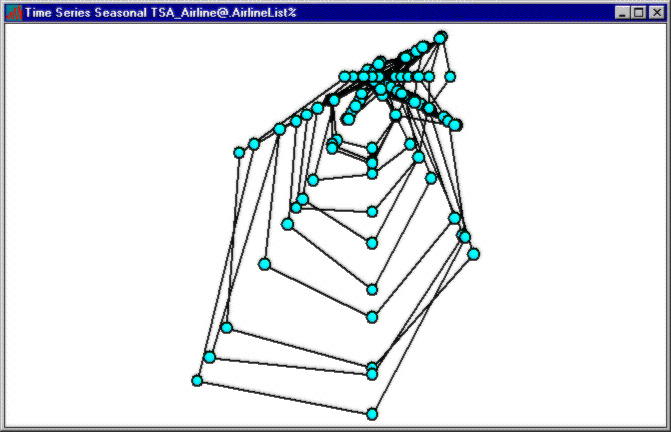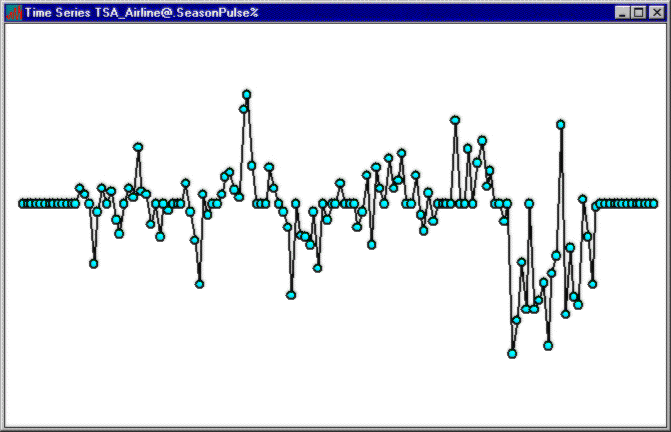
A difficulty with recognition of seasonal influences is that the seasonal surface may
be significantly dented, particularly if it is a small effect on a large base ramp. The
seasonal surface may be thought of as rotation to form a tube, just as we say a season
"comes round again". The overall properties of the seasonal tube are used to
free it of "dents", or non-repetitive events. 
The analogy of a panel beater is relevant. A badly dented car panel is repaired by having the severe dents removed, then the slight dents, until the original surface emerges. The panel beater does not have access to the original surface, and only needs to presume that local deformations and discontinuities were not part of the original. Unlike the car panel, the smooth seasonal surface in the time series never existed, because events were distorting it as they occurred, but a probabilistic seasonal surface can be recovered from the distortions and then used for projections.
It is important not to smear the different throughline elements of the seasonality while recovering the seasonal tube. There may be quite different growth rates for Easter and Christmas in a 12 month season, so while each element is used to free the other of distortion, their separate identities should be retained in the analysis, and separate bounding be able to be used in their projection. The requirement for maintenance of identity of throughline elements has not been met in other time series analysis techniques, but is simple to do here because of the precise identifiability of the network with the data.
The example shown is of airline ticketing with a 12 month cycle. The first diagram is
effectively looking along the seasonal tube, showing the seasonal rotation. Expansion in
the horizontal dimension is used to aid visualisation, but does not exist in the time
series. The blue nodes are variables representing the original time series data in the
knowledge network. Note the crossovers
in the connections between the nodes, where nodes are out of position and do not form a
smooth seasonal surface.
The shape of the seasonal surface is recognised by splining through each point on the surface from every possible plane of analysis, and shifting dents in the surface into a "Seasonal Pulse" structure. Pulses that span a season are pushed back through the analytic structure to be pulses on the base ramp. This allows a smooth seasonal surface to emerge, while retaining information about the non-repetitive events to be used in projection.
The seasonal tube after decomposition into repetitive and non-repetitive components is
shown in the two diagrams, one for the repetitive component and one for the pulse
component. It can be seen that the nodes in the repetitive component form a smooth
surface, but the surface was not smoothed by some algorithm operating locally and
destroying information. The nodes in the two diagrams represent additional variables that
have been created to represent the new information. These variables are available in the
model for further analysis, including further decomposition and correlative linking. 